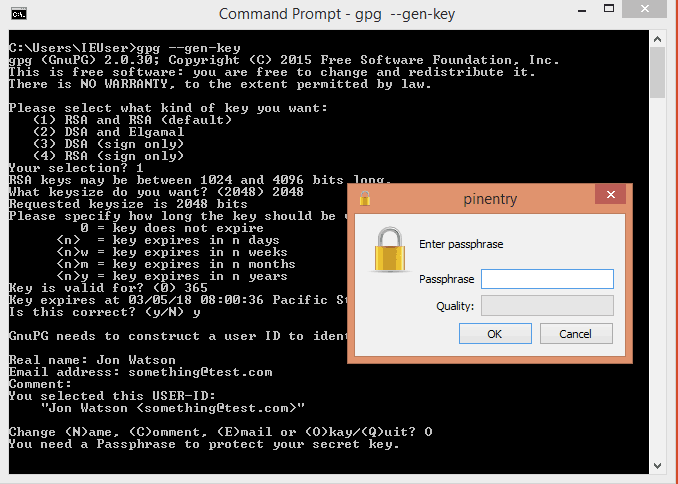- Table of Contents
- Generating a new keypair
- Exchanging keys
- Encrypting and decrypting documents
- Making and verifying signatures
Jan 20, 2010 How to Generate PGP Signatures with Maven. How to Generate PGP Signatures with Maven. Before you do anything with GPG, you will need to generate a key pair for yourself. Once you have you own key pair, you can use your private key to sign artifacts, and distribute your public key to public key servers and end-users so that they can validate.
GnuPG is a tool for secure communication.This chapter is a quick-start guide that covers the core functionalityof GnuPG.This includes keypair creation, exchanging and verifying keys, encryptingand decrypting documents, and authenticating documents with digitalsignatures.It does not explain in detail the concepts behind public-key cryptography,encryption, and digital signatures.This is covered in Chapter 2.It also does not explain how to use GnuPG wisely.This is covered in Chapters 3 and 4.
GnuPG uses public-key cryptography so that users may communicate securely.In a public-key system, each user has a pair of keys consisting ofa
Gpg Option For Generate Key Code

The command-line option
You must also choose a key size.The size of a DSA key must be between 512 and 1024 bits, and an ElGamalkey may be of any size.GnuPG, however, requires that keys be no smaller than 768 bits.Therefore, if Option 1 was chosen and you choose a keysize larger than1024 bits, the ElGamal key will have the requested size, but the DSAkey will be 1024 bits.
Finally, you must choose an expiration date.If Option 1 was chosen, the expiration date will be used for both theElGamal and DSA keypairs.
You must provide a user ID in addition to the key parameters.The user ID is used to associate the key being created with a realperson.
GnuPG needs a passphrase to protect the primary and subordinate private keys that you keep in your possession.
After your keypair is created you should immediately generate a revocationcertificate for the primary public key using the option
Notes
[1]Option 3 is to generate an ElGamal keypair that isnot usable for making signatures.


Encryption/decryption commands
Gpg Invalid Option --full-generate-key
- To encrypt a plaintext file with the recipient's public key:
- To sign a plaintext file with your secret key:
- To sign a plaintext file with your secret key and have the outputreadable to people without running GPG first:
- To sign a plaintext file with your secret key, and then encrypt itwith the recipient's public key:
- To decrypt an encrypted file, or to check the signature integrityof a signed file:
Key management commands
- To generate your own unique public/secret key pair:
- To add a public or secret key file's contents to your public orsecret key ring:
- To extract (copy) a key from your public or secret key ring:
or
- To view the contents of your public key ring:
- To view the 'fingerprint' of a public key, to help verify it overthe telephone with its owner:
- To view the contents and check the certifying signatures of yourpublic key ring:
- To edit a key:
- To remove a key or just a userid from your public key ring:
- To permanently revoke your own key, issuing a key compromise certificate:
- To disable or re-enable a public key on your own public key ring:
or
Esoteric commands
- To create a signature certificate that is detached from the document:
- To detach a signature certificate from a signed message
Gpg Gen Key
Command options that can be used in combination with other command options
Gpg Option For Generate Key Download
- To produce a ciphertext file in ASCII format, just add the -aoption when encrypting or signing a message or extracting a key:
- To specify a recipient, add the -r option followed by a user id:
- To specify an output file, add the -o option followed by a filename: